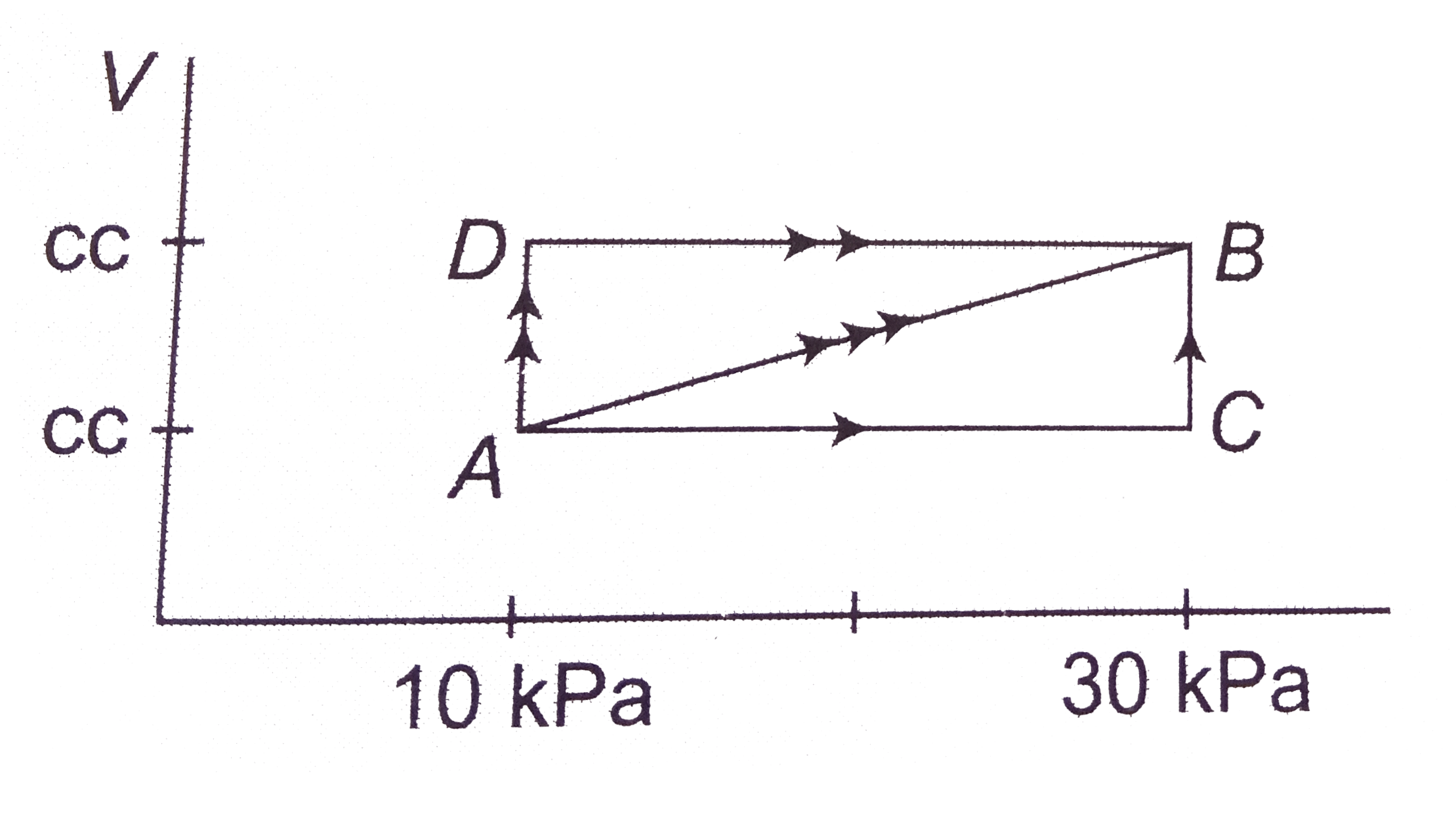
As shown in figure three paths through which a gas can be taken from the state A to the state B. Calculate the work done by the gas in each of the three paths.
ΔWACB=ΔWAC+ΔWCB
=0+30×103×(25−10)×10−6
=0.4J
ΔWAB=12(10+30)×103×(25−10)×10−6
=0.30J
ΔWADB=ΔWAD+ΔW(DB)
=10×103×(25−10)×10−6+0
=0.15J
Topper's Solved these Questions
Similar Questions
shows three paths through which a gas can be taken from the state A to the state B. calculate the work done by the gas in each of the three paths.
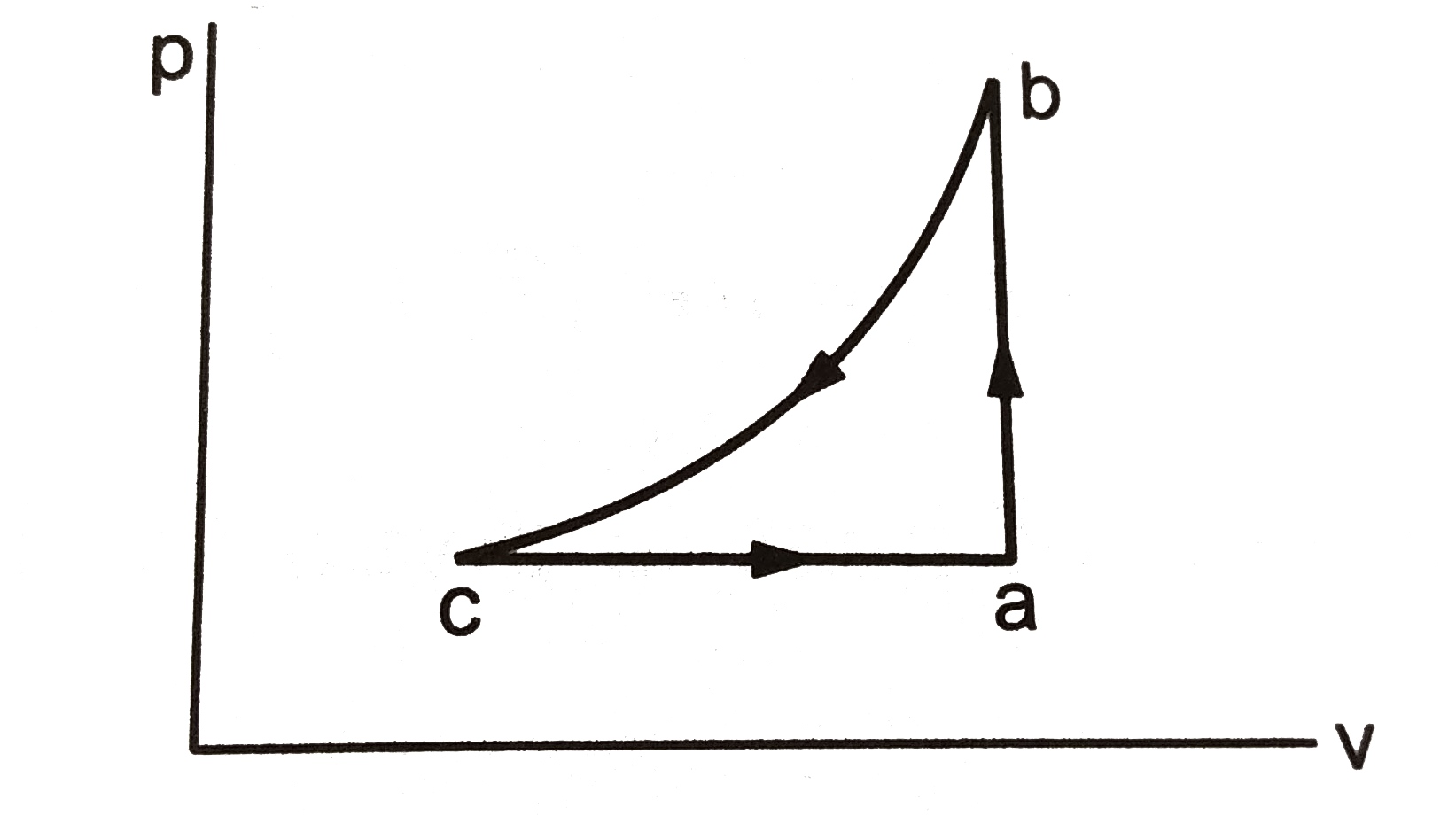

View SolutionFigure shows three paths through which a gas can be taken from the state A to the state B. Calculate the work done by the gas in each of the three paths.
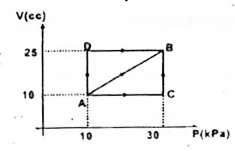
View Solution
Knowledge Check
Calculate the work done by the gas in the state diagram shown.
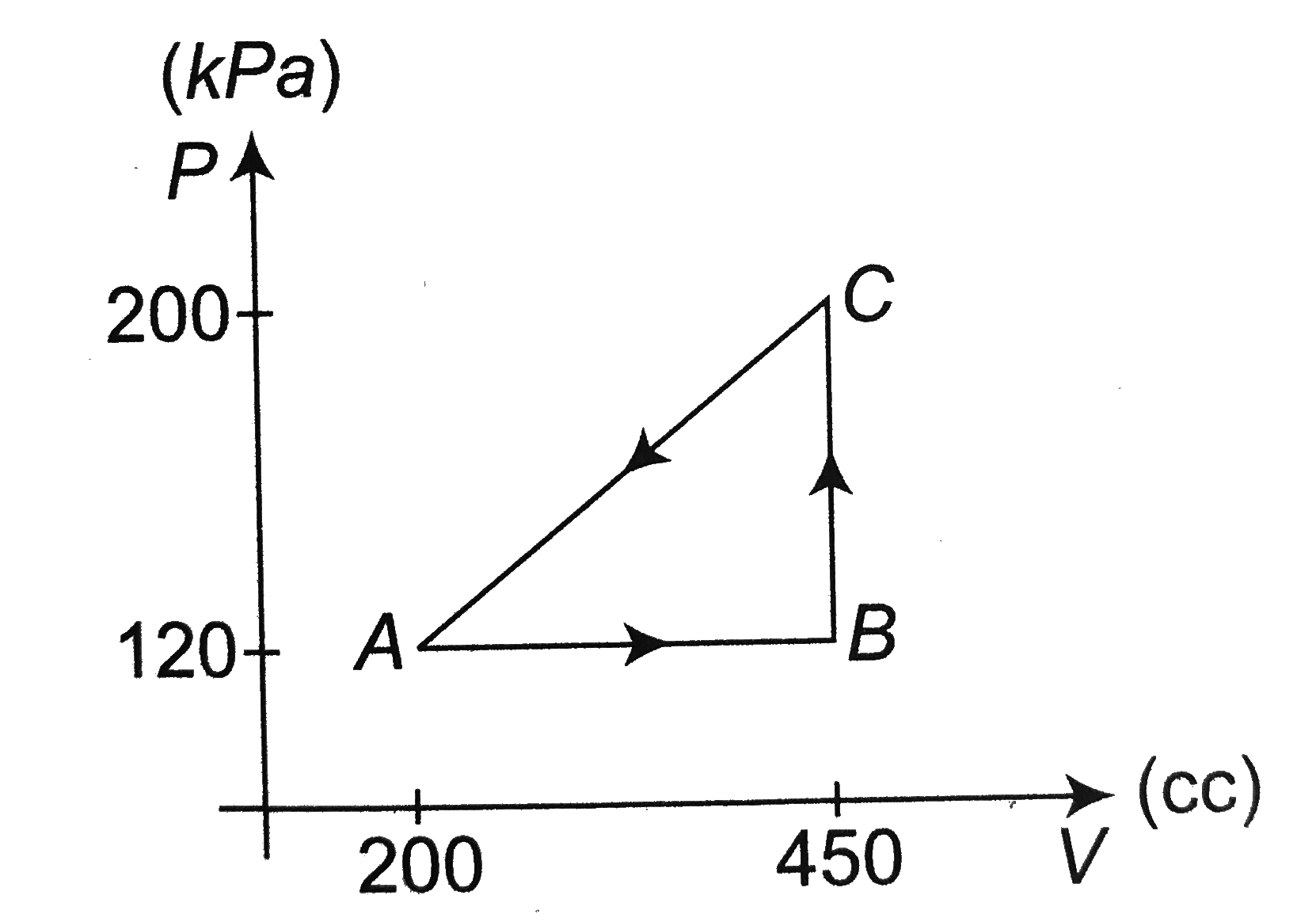 A30JB20JC−20JD−10J
A30JB20JC−20JD−10JAn ideal gas goes from the state i to the state ∫ as shown in .the work done by the gas during the process
 Ais positiveBis negativeCis zeroDcannot be obtained from this information.
Ais positiveBis negativeCis zeroDcannot be obtained from this information.An ideal gas is taken along the path AB as shown in the figure. The work done by the gas is
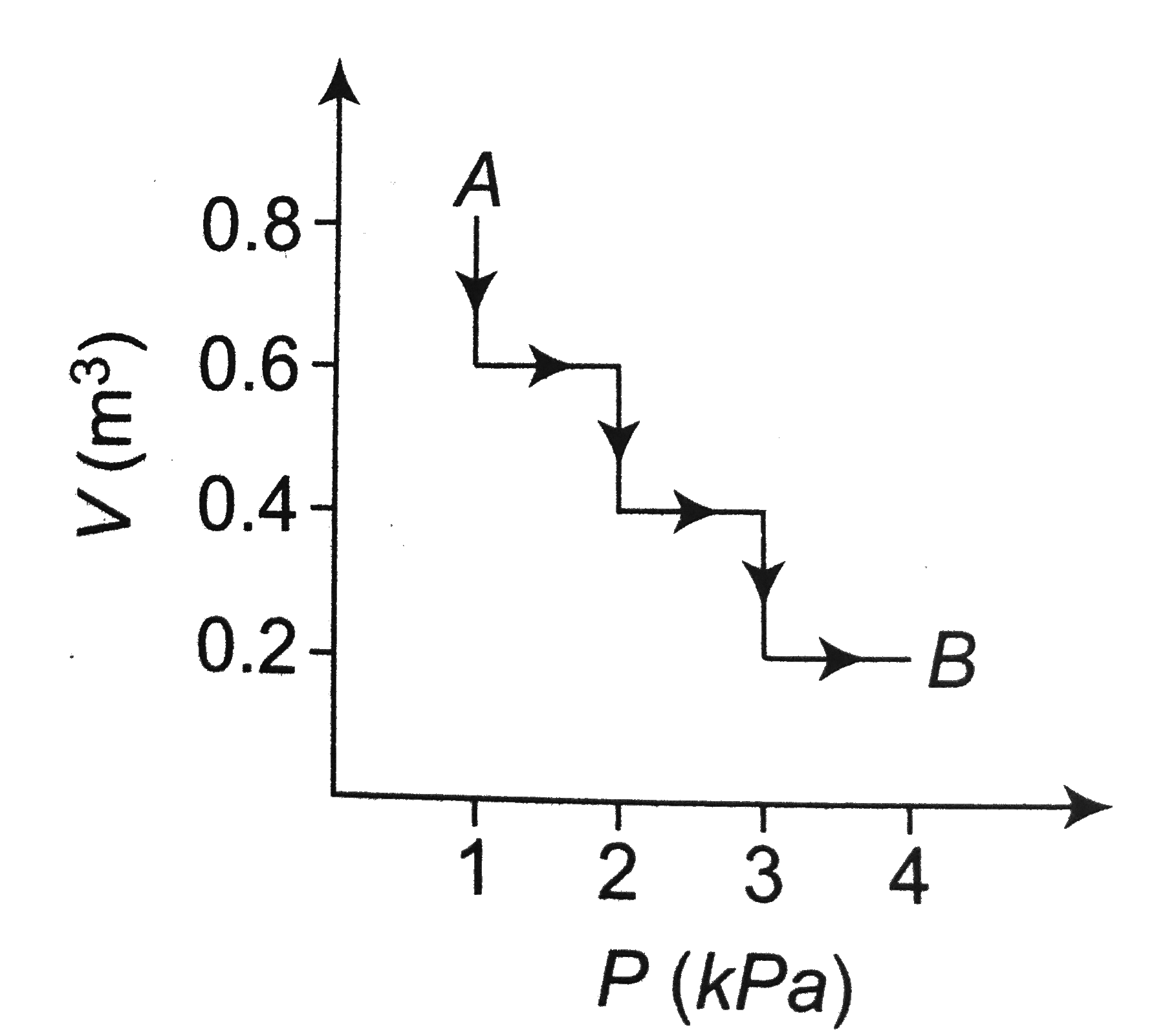 A600JB1200JC−600JD−1200J
A600JB1200JC−600JD−1200J
Calculate the work done by the gas in the state diagram shown :
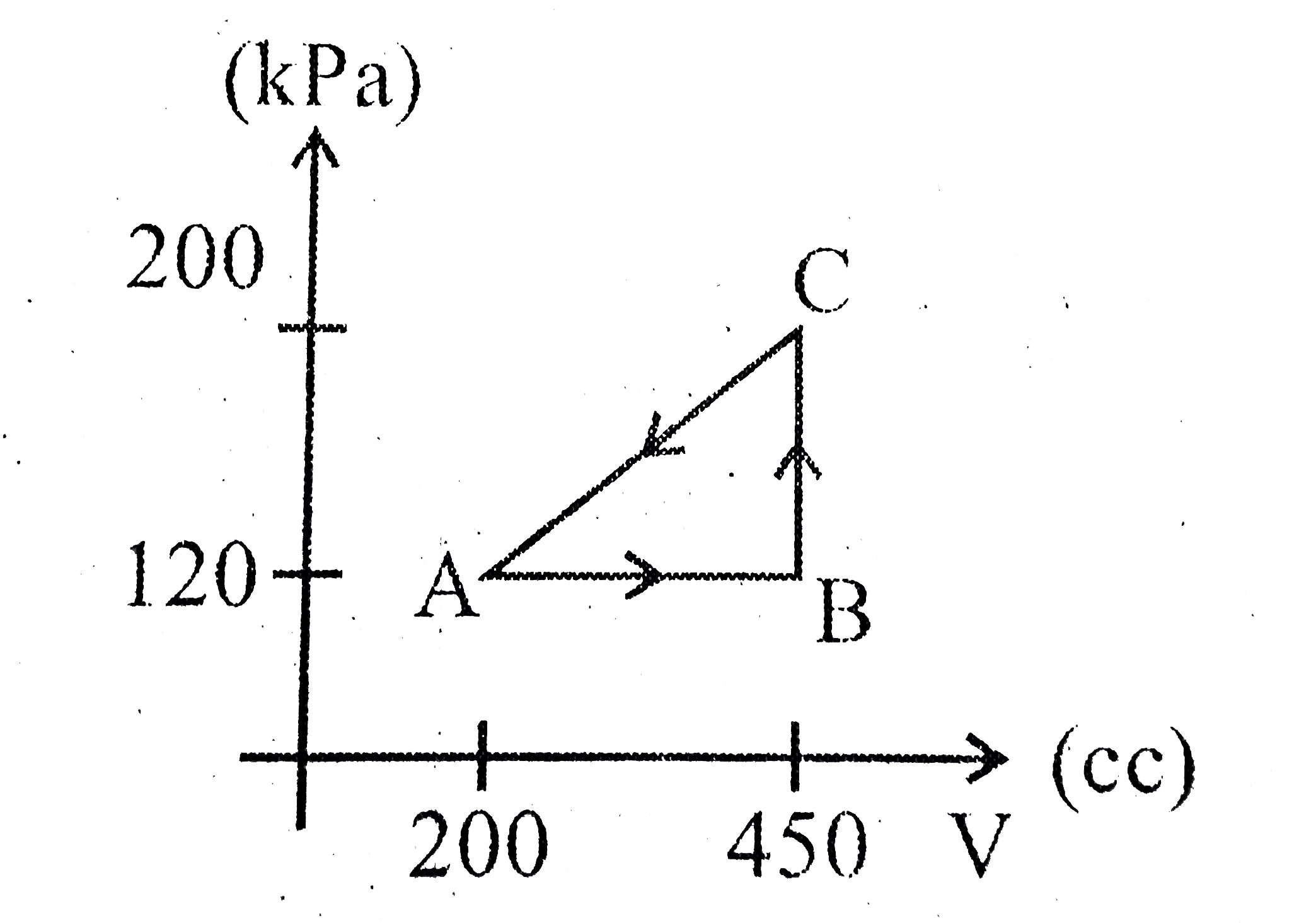
View SolutionThe figure shows two paths through which a gas can be taken from state A to state B. If the ratio of work done by the gas in the two paths is xy, then find (x+y).
'(##CEN_KSR_PHY_JEE_C15_E01_001_Q01##)'
View SolutionAn ideal gas change from state a to state b as shown in Fig. what is the work done by the gas in the process?

View SolutionAn ideal gas change from state a to state b as shown in Fig. what is the work done by the gas in the process?

View SolutionA gas is taken through the cycle A → B → C → A, as shown. What is the net work done by the gas?
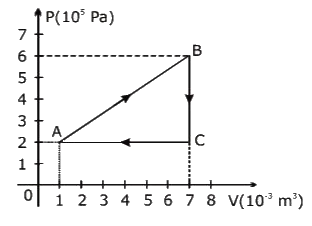
View Solution
